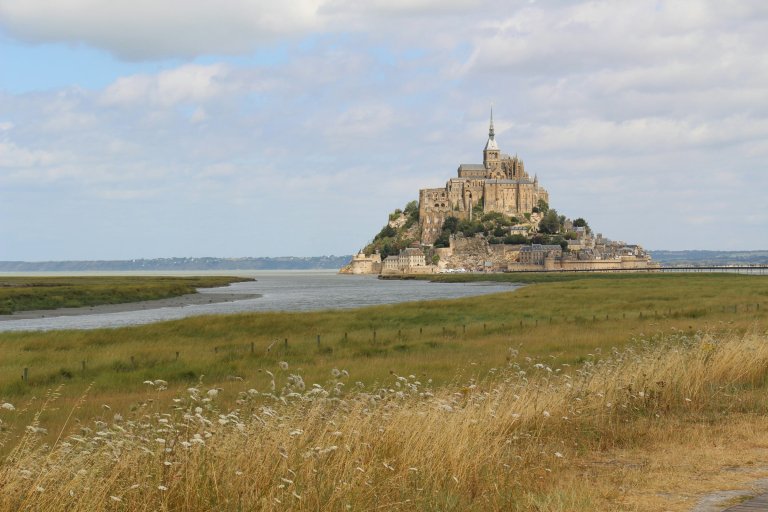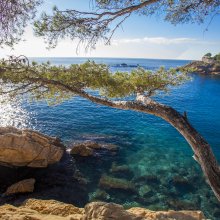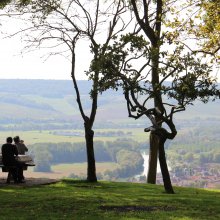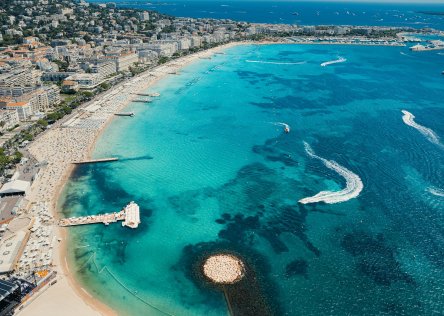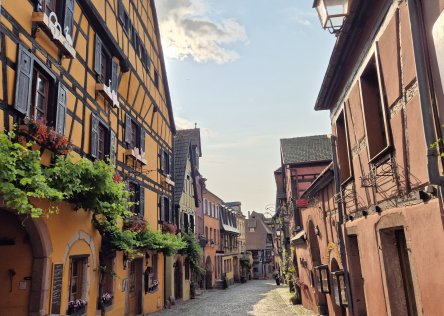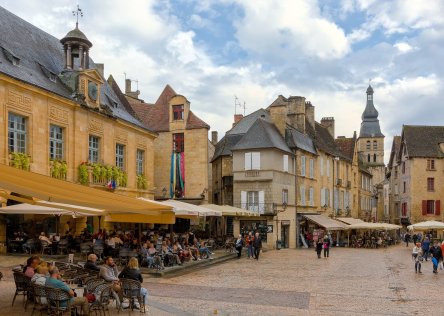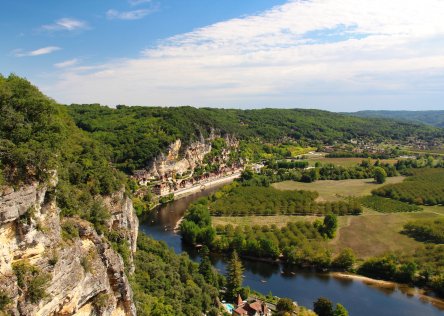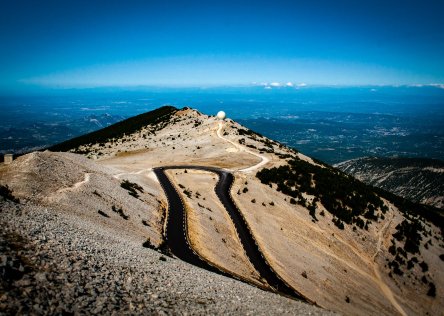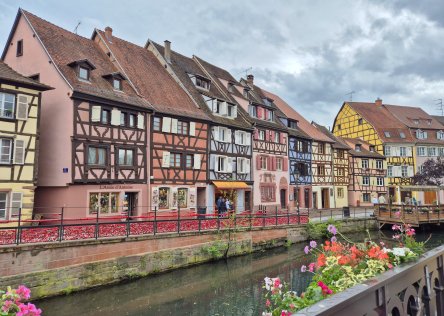France’s history spans thousands of years, from Roman ruins to medieval fortresses to World War history. Below, we list historical highlights region by region. We hope you will find this helpful if you’re planning a self-drive trip that includes both iconic landmarks with lesser-known treasures.
We warmly invite you to browse our France history tours
Paris: Les Invalides
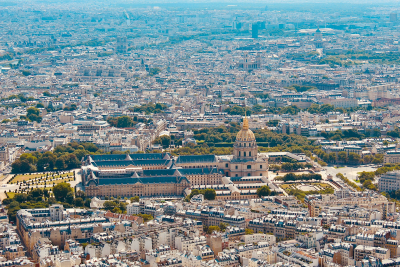
Why Visit: A symbol of France’s military past, with museums and monuments dedicated to war veterans, Les Invalides and the Army Museum will be of particular interest to those who are interested in military history.
Key Features: Grand courtyard, Dome Church with Napoleon’s tomb, and the Army Museum
Insider Tip: Guided tours are available on certain days
Les Invalides was originally built in the 17th century as a home and hospital for wounded soldiers. Parts of it still serve this purpose today, alongside extensive collections covering centuries of warfare. The Dome Church, crowned by a gilded dome, holds the tomb of Napoleon Bonaparte.
Paris: The Catacombs
Why Visit: A visit to the Paris Catacombs will take you on fascinating and eerie journey beneath the streets of Paris. The Catacombs reveal a lesser-known side of Paris and offer insight into how the city managed its overflowing cemeteries in the 18th century.
Key Features: Underground tunnels, walls lined with human bones, and historical plaques explaining the site’s origins
Insider Tip: Book tickets in advance, as only a limited number of visitors are allowed in at a time. Keep in mind that this experience probably won't be suitable for young children.
The Paris Catacombs were created in the late 1700s when Paris’s cemeteries became dangerously overcrowded. Human remains were transferred into former limestone quarries, eventually forming a network that stretches for miles underground. Today, a section is open to the public, allowing visitors to explore dimly lit passageways lined with the bones of more than six million Parisians—a sobering yet memorable experience.
Provence: Arles Roman Amphitheater
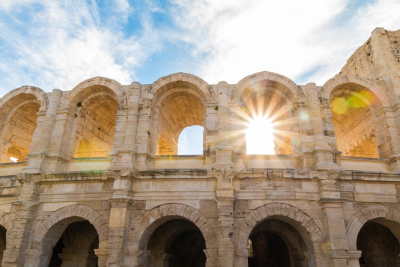
Why Visit: This gladiatorial amphitheater is one of Provence’s most significant Roman monuments, and is still used for events today.
Key Features: Well-preserved arches, internal galleries, and audio-guide walking routes
Insider Tip: Other Roman sites in Arles include the Roman Theater and the Roman Baths of Constantine, but if you’re short on time, you may choose to prioritize the Amphitheater.
Arles was once a thriving Gallo-Roman city, and its well-preserved, two-tiered amphitheater remains a highlight. Built in the 1st century AD, it once seated thousands of spectators for chariot races and gladiator shows. Today, you can explore the passageways and imagine the Romans coming here for their entertainment.
If you have time, pick up a guide from the tourist office and follow a self-guided walking tour that will take you to other Roman ruins across town, as well as giving information about other places of interest.
You may visit Arles on any of our Provence tours
French Riviera: Fort Carré in Antibes
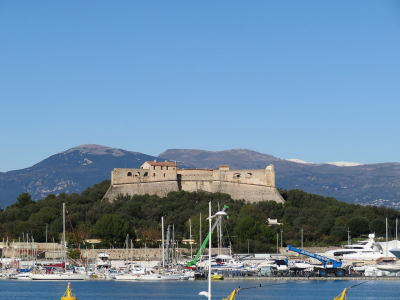
Why Visit: Fort Carré is a 16th-century fortress overlooking the Mediterranean, giving you a taste of the history of the region and sea views.
Key Features: Its star-shaped design is an early example of the geometric style that was later perfected by the famous engineer Vauban.
The ramparts offer 360-degree views panoramic views
The four-hectare protected zone around the fort is dotted with Mediterranean scrub and medicinal plants
Insider Tip: Check opening times, as guided visits are scheduled. Ask your B&B hosts or hotel to call ahead to find out. It is a long walk up to the fort, so leave enough time and wear good shoes.
While the French Riviera is famous for its beaches and aquamarine sea, it also offers centuries of maritime heritage. Fort Carré once guarded Antibes against invaders. A guided tour (usually in French) will reveal hidden passages and explain how the fort’s distinctive star shape aided its defenses. It’s a unique way to immerse yourself in the region’s past while enjoying a beautiful coastal backdrop.
You may like to browse our French Riviera tours
Lyon: Les Traboules
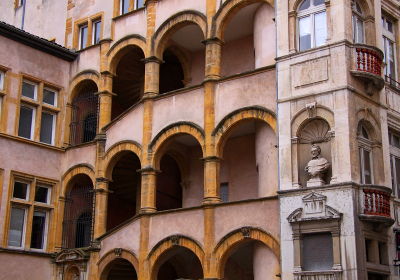
Why Visit: These secret Renaissance-era passageways are unique to Lyon and offer a glimpse into the city’s architectural history, as well as daily life during the silk-weaving era.
Key Features: Hidden courtyards, spiral staircases, arched tunnels connecting streets—especially in Vieux Lyon and La Croix-Rousse
Insider Tip: Many traboules are inside residential buildings. Look for discreet plaques or take a guided walking tour for easier access
Lyon’s silk-weaving era began in the 16th century, when King François I granted the city a monopoly on silk production in France. By the 1800s, Lyon had become Europe’s leading silk producer, with tens of thousands of silk workers, known as canuts, based primarily in the La Croix-Rousse district.
Lyon’s traboules were built to help silk workers transport their goods from the hillside workshops of La Croix-Rousse down to the textile merchants near the Saône River in Presqu’île. The covered passageways allowed them to move the silk efficiently and provided protection from inclement weather. The river connected Lyon to major trade routes, making it one of Europe’s key centers for silk commerce.
Later, these hidden passages were used by the French Resistance during WWII.
Lyon: Roman Theaters of Fourvière
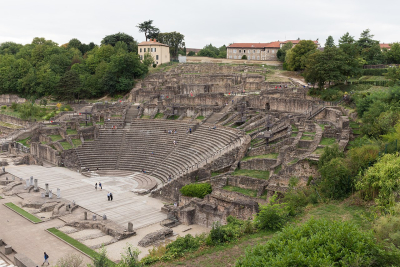
Why Visit: Lugdunum (Lyon) was the capital of Roman Gaul. These two remarkable Roman theaters in Lyon showcase the city’s ancient roots
Key Features: Tiered seating carved into the hillside, a nearby archaeological museum, and an annual performing arts festival
Insider Tip: The area also offers views of Lyon
Lyon’s history dates back to its founding by the Romans in 43 BC. The theaters at Fourvière represent that heritage, with stone seats that once welcomed spectators for plays and musical performances. They’re still used for events each summer, as well as exhibitions throughout the year, blending the old and new in an historical and picturesque setting. After you explore, you may follow the footpath down the hill for a taste of Lyon’s famed cuisine in the Old Town.
Loire Valley: The Castles of the Loire
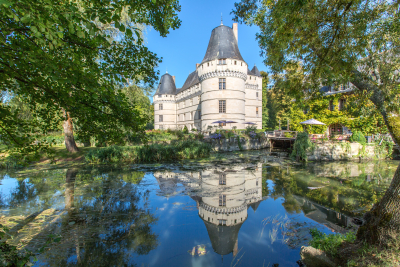
Why Visit: A chance to see multiple châteaux, each demonstrating a range of architectural styles and fascinating stories
Key Features: Restored formal gardens and double-helix staircase at Chambord, enchanting arches at Chenonceau, sculpted gardens at Villandry, medieval charm at Chinon, and Renaissance connections at Amboise and Clos Lucé
Insider Tip: We particularly like some of the lesser-known castles, such as the beautiful Château de l’Islette in Amboise. There, you can discover the castle's interesting history and enjoy a picnic in the garden away from the tourist crowds.
Known as the “Garden of France,” the Loire Valley has more than 300 castles, ranging from grand Renaissance estates, like Chambord, to romantic beauties, like Chenonceau.
Garden lovers will love the stunning formal gardens at Villandry. If you are interested in Leonardo da Vinci’s work, Amboise and Clos Lucé offer insights into his time at the French court. Or if you would like to learn about the royal wedding that united Brittany with France, be sure to visit Langeais castle (right next to France Just For You HQ!).
Each castle reveals a different facet of France’s royal past.
You can discover the castles of the Loire Valley when you book one of our Loire Valley tours
Normandy: The D-Day Landing Beaches
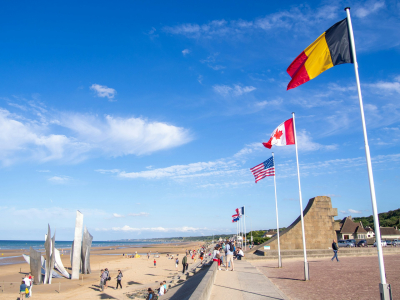
Why Visit: A powerful and moving destination, the D-Day beaches commemorate one of the most significant military operations of the 20th century and honor the memory of those who fought for liberation during World War II.
Key Features: Omaha Beach (especially meaningful for American visitors), Utah Beach (also American), Gold Beach (British), Juno Beach (Canadian), Sword Beach (British and French), Pointe du Hoc, Arromanches, and the American Cemetery
Insider Tip: For deeper historical insight, consider booking a private guided tour with a local expert
On June 6, 1944, Allied forces launched the largest amphibious invasion in history along the coast of Normandy. The five landing beaches—Utah, Omaha, Gold, Juno, and Sword—each played a critical role in the success of Operation Overlord. Today, visitors can walk the same sands, visit moving memorials and cemeteries, and explore well-curated museums, such as the one at Arromanches, which highlights the ingenious artificial harbor built by the Allies. This is a deeply reflective and educational experience, particularly meaningful for travelers with a personal or cultural connection to World War II, or for those who have a special interest in world war history.
Normandy: Mont-Saint-Michel
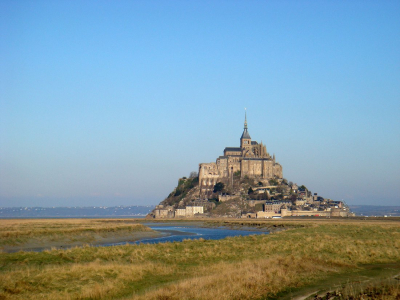
Why Visit: This iconic abbey stands atop a tidal island, and is one of France’s most famous UNESCO World Heritage Sites
Key Features: Centuries-old monastery, winding village streets, and dramatic high-tide transformations
Insider Tip: Check the tidal schedule—when the water surrounds the rock, the view is unforgettable. If you book one of our Normandy tours, we will share with you our favorite spot for capturing a stunning photo of Mont Saint Michel
Mont Saint Michel stands at the boundary between Normandy and Brittany. Dating back to the 8th century, this medieval marvel has drawn pilgrims for centuries.
Nowadays, visitors can cross to the islet via a light bridge and climb the steep streets to reach the abbey. Whether you’re interested in religious history or just want to see the spectacle of a fortress-island, Mont Saint Michel is a highlight of many a Normandy road trip.
Dordogne: Font-de-Gaume Cave
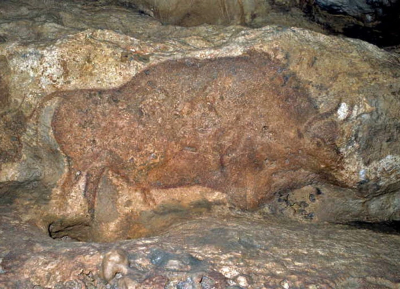
Why Visit: If you’re interested in prehistory, a visit to one of France’s prehistoric caves shouldn’t be missed. The Font-de-Gaume cave is one of the last remaining original prehistoric caves in France that is still open to the public
Key Features: Polychrome cave paintings of bison, mammoths, and horses, plus a limited daily visitor quota
Insider Tip: We strongly recommend booking your tickets in advance. To preserve the cave’s artwork, only a small number of people can enter each day
The Dordogne region is famous for its prehistoric cave art, and Font-de-Gaume offers a rare glimpse into the world of our ancient ancestors. The polychrome paintings date back around 17,000 years and depict animals that roamed this area long before modern history. If you can’t get tickets, you could visit the nearby replica at Lascaux 4 for a detailed recreation of Paleolithic cave art.
Discover our Dordogne tours
Champagne: Reims Cathedral
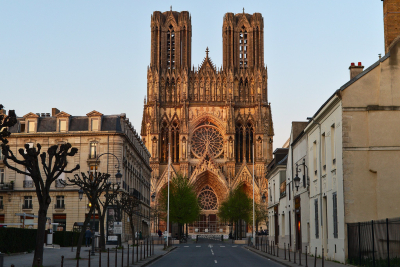
Why Visit: It’s a masterpiece of Gothic architecture and the traditional coronation site of French kings from the coronation of Louis VIII in 1223 until the last French coronation, which was that of Charles X on 29 May 1825.
Key Features: Towering stained-glass windows, ornate stone carvings, and the famous “Smiling Angel” statue that welcomes visitors at the main portal.
Insider Tip: If you’d like a closer look at the gargoyles and roof details, book a tour of the towers. Keep in mind that places are limited, you’ll need to be able to climb 250 steps, and tours run at set times, so reserve online.
Reims Cathedral hosted 33 coronations, the most famous of these being the coronation of Charles VII by Joan of Arc on July 17th, 1429.
Marvel at the cathedral’s intricate façade before going inside to admire the stained glass windows in the apse created by Marc Chagall in the 1970s. The vibrant colors add a modern touch to the Gothic interior.
While you’re in Reims, explore local Champagne houses to experience another important aspect of this region’s identity.
Burgundy: Fontenay Abbey
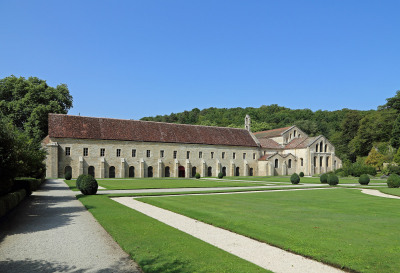
Why Visit: Fontenay Abbey is one of Europe’s oldest and best-preserved Cistercian abbeys and a UNESCO World Heritage Site, founded in 1118
Key Features: Romanesque architecture in serene natural surroundings, and a smithy (a blacksmith’s workshop) that once produced iron tools
Insider Tip: Arrive when the gates open (or an hour before closing) to enjoy the cloister and gardens in near‑silence. The low sun highlights the warm Burgundy stone. While you’re there, visit the forge and get a sense of the Cistercian monks’ 12th-century industrial know-how, as they used water power to operate bellows and hammers.
In the Burgundian countryside, Fontenay Abbey invites visitors to experience medieval monastic life. Most of the 12th‑century layout is still in place: the church, dormitory, cloister, chapter house, caldarium, dovecote, and the water‑powered forge; only the refectory is missing. As you explore, notice how the architecture blends Romanesque rounded arches with early Gothic structural elements, illustrating the transition in medieval building styles.
Nearby, you can also visit Vézelay Abbey or the Hospices de Beaune for a more complete introduction to Burgundy’s history.
You can explore beautiful Burgundy on a Burgundy tour planned just for you
Bordeaux: La Grosse Cloche
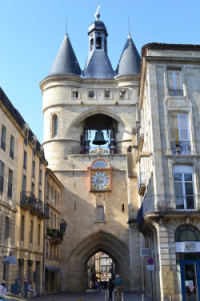
Why Visit: One of the oldest belfries in France, La Grosse Cloche is a symbol of Bordeaux’s medieval heritage and civic pride.
Key Features: 15th-century bell tower, twin conical roofs, ornate clock, and a massive 7,800 kg bell named “Armande-Louise.”
Insider Tip: The bell only rings on special occasions, such as Bastille Day and Armistice Day.
La Grosse Cloche, meaning “The Big Bell,” once served as the gateway to the old city and was used to sound alarms and mark significant events. The tower also functioned as a prison for petty criminals. Its distinctive architecture and historical significance make it a must-see landmark when exploring Bordeaux’s rich past.
If you book one of our tours of Bordeaux, we can arrange for an expert Bordeaux tour guide to show you the most interesting parts of the city, including La Grosse Cloche.
Basque Country: The Citadel at Saint-Jean-Pied-de-Port
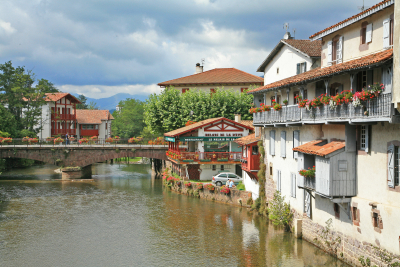
Why Visit: A key stop on the pilgrimage route to Santiago de Compostela
Key Features: Steep cobblestone streets, fortified walls, and an ancient city gate
Insider Tip: Time your visit for a weekday morning if you’d like to explore the shops without the usual tourist crowds
Saint-Jean-Pied-de-Port rests in the foothills of the Pyrenees, and is the last French stop for people walking the Camino de Santiago. The Citadel of Mendiguren will be interesting for history buffs for various reasons:
- Border-defence history: The fortress was France’s front-line shield during repeated 17th- and 18th-century conflicts with Spain and again in the Napoleonic era. As you stand on the walls, you may picture the strategic chess game once played across the Pyrenees.
- Connection to the Camino de Santiago: Pilgrims following the Camino Francés (the French route) pass under the Porte St-Jacques (a UNESCO-listed town gate) and climb toward the citadel before crossing into Spain. This overlap between the region’s military and pilgrimage history gives the site a unique dual role.
- Vauban engineering in miniature: Many Vauban forts (such as the one at Blaye) are vast. Mendiguren is smaller, so it’s possible to circle the entire perimeter in less than half an hour, and still notice all the hallmark design solutions. It’s a perfect way to learn a bit about 17th-century military architecture in a short time.
- The views: From the parapet path you can trace the winding Nive River below, spot terraced Irouléguy vineyards on nearby slopes, and see the first Pyrenean peaks that pilgrims tackle the next morning after they depart from Saint-Jean-Pied-de-Port. The full panorama of this fortress helps visitors understand why it sits exactly where it does.
In short, the Citadel of Mendiguren offers a mix of Vauban design, frontier history, and Camino culture—making it a worthwhile stop for anyone interested in how military strategy, trade routes, and religious pilgrimage have intersected in this part of the French Basque Country for centuries. You’ll also be able to appreciate some key aspects of the Basque culture through the town’s architecture, language and food.
Brittany: Carnac Megalithic Stones
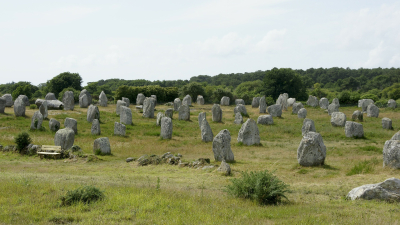
Why Visit: This site is home to the world’s largest concentration of Neolithic standing stones - about 3,000 menhirs erected between 4500 and 3300 BCE by the pre-Celtic people of Brittany.
When to visit: The Carnac standing stones are freely accessible for visits from October to March. Some areas may be closed to visitors for maintenance. From April to September, you can only visit the site on a guided tour. You can book your tickets online.
Key Features: Three main alignments (Ménec, Kermario, Kerlescan), table-like dolmens, and the Tumulus Saint-Michel burial mound. Many stones line up with sunrise or sunset points at the solstices, suggesting an early calendar or ritual use.
Insider Tips: Climb the small hill of Tumulus Saint-Michel (free access) for a bird’s-eye view that helps you grasp the scale and geometry of the alignments. Then you may like to stop at the Carnac Prehistory Museum in town to see polished-stone axes and pottery found on-site. There’s a book about the museum in English that you can buy from the gift shop.
Local legend claims these stones are a Roman legion turned to stone by the wizard Merlin; however, archaeologists believe they were erected by Neolithic or Mesolithic farming communities with the engineering know-how to quarry, move, and set each granite block. It still isn’t completely clear which people erected the stones.
Guided visits (from April to September) give you closer access to fenced areas and explain how recent research has linked certain rows of stones to lunar cycles. But even just the sight of thousands of granite stones stretching across the Breton countryside is worth seeing if you’re interested in Neolithic history.
You may like to browse our self-drive tours in Brittany
Carcassonne: Cité de Carcassonne
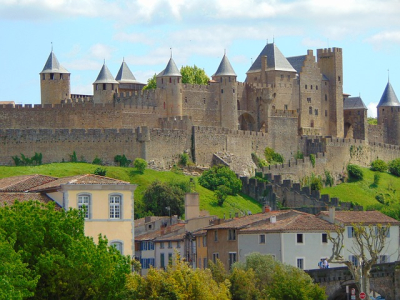
Why Visit: Europe’s largest fortified medieval city, complete with centuries-old walls and turrets
Key Features: Restored ramparts, a medieval castle (Château Comtal), and winding cobbled streets
Insider Tip: Evening walks within the Cité can be magical—consider staying overnight to appreciate it without daytime crowds
Carcassonne’s UNESCO-listed walls have protected the city for centuries. Today, visitors can cross the drawbridge to reach the old quarter, browse medieval architecture, or tour the main castle for a closer look at feudal life. Get more inspiration on things to do in Carcassonne here.
Alsace: Strasbourg Cathedral
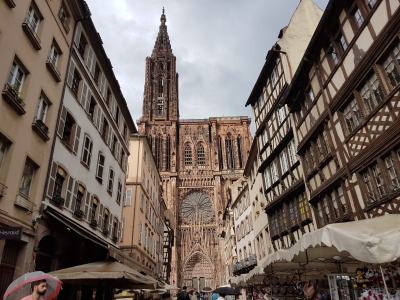
Why Visit: Once the tallest building in the Western world (1647-1874), this Gothic cathedral dominates Strasbourg’s skyline and blends engineering ambition with artistry. Its 142-meter spire (466 ft), rose-pink sandstone, and 12th-15th-century sculptures showcase how medieval builders pushed the boundaries in terms of both the height and decoration of the cathedral.
Key Features: The elaborate astronomical clock that springs to life at 12.30pm, hundreds of finely carved figures on the west façade, and stone that shifts between a pink and copper color depending on the light.
Insider Tip: From mid-July to late August the cathedral square hosts a free nightly light show. Find an outdoor table at a nearby café after sunset, and watch the façade transform into a storybook of color and projected animation.
Strasbourg Cathedral was built on the remains of a Roman temple and has evolved over the centuries. From its mesmerizing stained glass to the elaborate astronomical clock, it showcases Alsace’s long-standing fusion of French and German influences.
Plan time to wander the surrounding alleys and the old town (‘La Petite France’), where half-timbered houses line the narrow canals once used by tanners and millers, and today host small bakeries, craft studios, and corner wine bars.
Lille: Vieille Bourse (Old Stock Exchange)
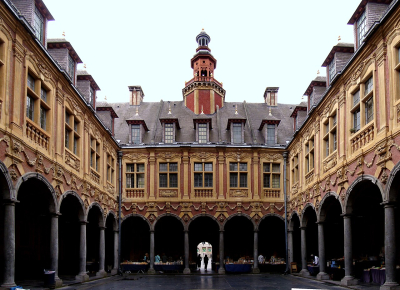
Why Visit: Built in 1653, this Flemish-Renaissance exchange hall was once the commercial heart of Lille’s cloth and spice trade and remains the city’s most emblematic civic building.
Key Features: Twenty-four identical façades packed with sculpted garlands and mythological figures, an arcaded inner courtyard that hosts a daily econd-hand book and print market, and seasonal evening events such as open-air chess and tango.
Insider Tip: If you’re visiting Lille between July and September and enjoy dancing, drop by on a Sunday between 7-11pm. Local dancers and tango enthusiasts gather in the courtyard to dance tango (for free).
On Lille’s Grand-Place, the Vieille Bourse shows how prosperous 17th-century merchants blended commerce with artistry. Each façade follows the same blueprint: brick pilasters, stone masks, and gilded cartouches. But if you take a closer look, you’ll see subtle differences commissioned by individual investors. Pass through one of the street-level passageways and you’ll find a quiet courtyard inside, where vendors sell vintage books, postcards, and posters. Even if you’re not shopping, it’s an atmospheric spot to pause with a coffee.
You may also be interested in our Flanders Fields battlefield tours, which you may visit if you're staying in Lille.
Verdun: Douaumont Ossuary & Memorial Museum
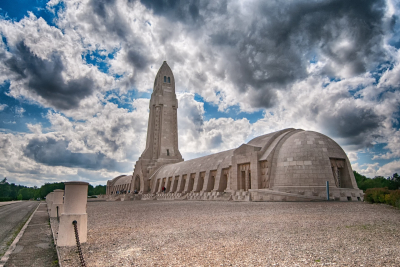
Why Visit: This is the central memorial to the 1916 Battle of Verdun, where bone remains of more than 130,000 French and German soldiers are gathered behind glass panels.
Key Features: A 150-foot tower you can climb for a 360° view of the former battlefield, stained-glass windows designed by Georges Desvallières, and the national cemetery with 16,000 white crosses in front of the ossuary.
Insider Tips: Combine this with the Verdun Memorial Museum (5 minutes by car) to learn more about the 1916 battle. Its touch-table screens let you call up a soldier’s photograph, service record, and letters home simply by scanning the name from a grave marker or Ossuary register.
If you’re interested in American military history, the largest American military cemetery in Europe is the Meuse-Argonne American Cemetery and Memorial, about 30 miles northwest of Verdun near Romagne-sous-Montfaucon.
For travelers interested in war history, we highly recommend a visit to Verdun. This was the setting for one of WWI’s most devastating battles, with huge loss of life on both sides. Douaumont Ossuary houses the remains of fallen soldiers, reminding visitors of the scale of the conflict.
The ossuary itself is a solemn place for mostly silent contemplation. The memorial museum provides context, including uniforms, war diaries kept by soldiers, photos, and drawings. Multi-media kiosks tell the story of the battlefield, using modern aerial images to highlight the scars left by the war, concealed today by the forest. Virtual reality headsets allow visitors to see the battlefield, before, during and after the battle.
You may visit this region on one of our Verdun tours
Somme: Thiepval Memorial to the Missing of the Somme
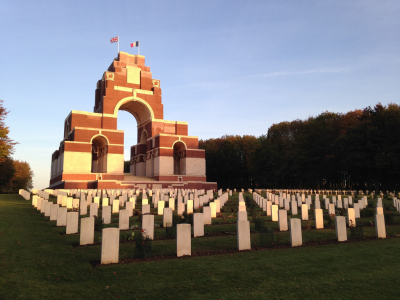
Why Visit: The world’s largest Commonwealth war memorial, listing 72,337 British and South African soldiers who died in the Somme sector (July 1915 – March 1918) and have no known grave.
Key Features: Sir Edwin Lutyens’s 45-m brick-and-stone arch, an Anglo-French cemetery at its base, and an on-site visitor center
Set on a ridge chosen for its visibility to returning veterans, Thiepval conveys the scale of the Somme’s losses. The museum’s artifacts bring some individual stories to life.
Pairing the site with Vimy Ridge and the Somme American Cemetery lets travelers trace how British, Canadian, and American forces each contributed to the war in this region.
Insider Tip: North American travelers may be more interested in visiting the war cemeteries and memorials below:
Canadian National Vimy Memorial (45 min north)
Its twin pylons bear the names of 11,285 missing Canadians, including many who fought on the Somme before movi to Vimy Ridge in 1917.
Somme American Cemetery at Bony (40 min east)
This site honors 1,844 U.S. soldiers who fell in the 1918 Somme campaign. Learn more about the American advance at the visitor center.
We invite you to browse our Somme battlefield tours
France’s historical richness, of course, extends far beyond this blog post. There are many more historical sites that are worth seeing. However, we hope this regional roundup may serve as a starting point as you start thinking about your trip to France.
If you would like a personalized France itinerary planned by us, your local experts, we’d love to craft a tour just for you, based on your interests and preferences.
Feel free to reach out to us at France Just For You, or complete the trip-planning form below, and let us know how you’d like to explore France’s fascinating history, on your schedule, at your pace.
